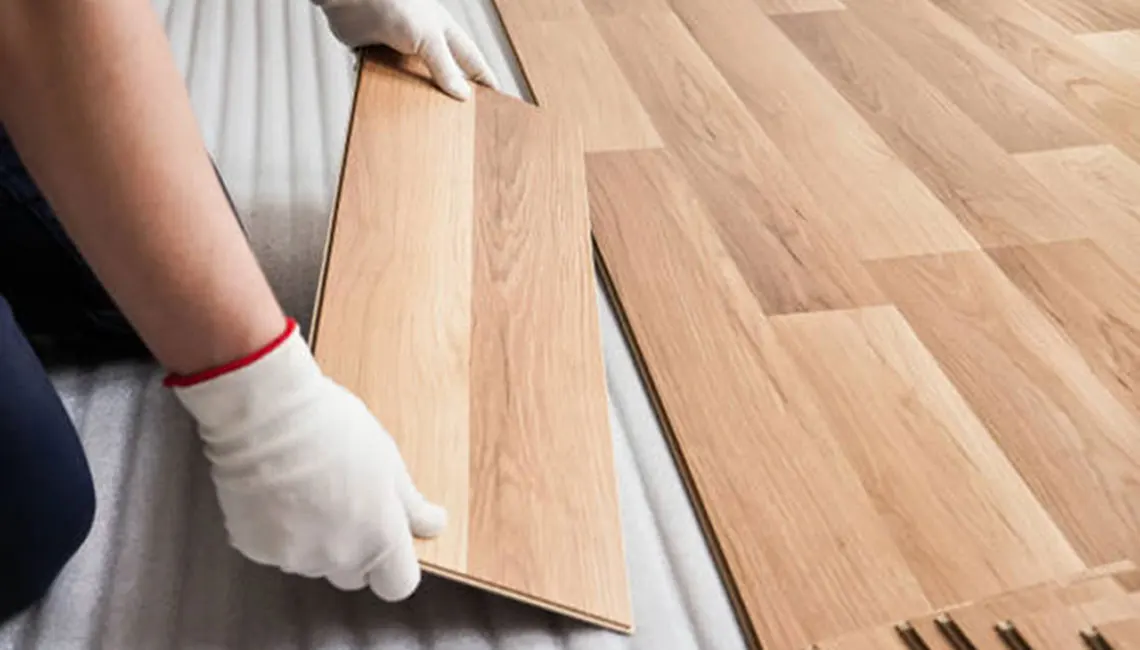How to Install Wood Floor Tiles? Step by Step Guide
Wood floor tiles blend the strength of porcelain tiles with the natural beauty of hardwood. Moreover, this flooring option is pretty affordable than natural hardwood, is easier to maintain, and comes in a variety of colors, patterns, and designs.
However, most bricklayers are confused about how to install them. After all, proper installation of wood floor tiles is critical in order to reap their full benefits.

Steps To Install Wood Floor Tiles
Before we learn how to lay down wood floor tiles, we must first understand the basic structure of floor tiles. Basic tile installation has a solid subfloor, a thin mortar layer, a tile substrate, and another layer of mortar followed by tiles, grout, and sealer.
Again, you can install over-old vinyl flooring in some circumstances, but for the best installation, we recommend removing the vinyl. In addition, the subfloor should be in good condition and of uniform thickness to ensure that the wood floor tiles are adequately laid.
It's also worth noting that a flat subfloor is critical for preventing plank tile cracking. You can achieve this by using a leveling compound. After that, make sure your subfloor is dry and clean
1. Once the subfloor has been prepped, install the substrate. The two primary substrate options are– cement backer board or a thinner waterproof uncoupling membrane. Both these substrates are excellent for spaces such as kitchens.
2. Prepare the door jambs before installing the substrate. Stack wood floor tiles on a piece of the substrate against the trim. Use a saw to cut it.
3. After that, roll the uncoupling membrane across the floor and cut it to size. Set it aside and use the flat side of the trowel to distribute latex Portland cement mortar. Then, comb through in straight lines.
4. Place the underlayment on top and use a float to press it into the mortar. Continue installing Wood floor tiles across the room. Cut the underlayment to fit where needed. Spread unmodified thin-set across the seams and press the waterproofing band over the top to make the surface waterproof.
5. Next, draw your starting lines. Mark the intersection of two opposing walls with a chalk line on the floor. Repeat on the remaining walls to form a cross. Measure from the center to the starting line. Subtract the expansion gap of a quarter-inch and the width of the two tiles.
6. The next stage in installing wood floor tiles is to do a dry plan with spacers to see whether you will have thin pieces along the perimeter. Make any necessary adjustments and, if necessary, redraw your starting line.
7. Place a straight edge on the line and secure it using mortar or grout bags. With this row, begin installing wood floor tiles. Mix unmodified thin-set for large format tile according to directions.
8. Apply it to a small work area and press it into the underlayment's cavities. Next, spread more thin-set and combine with the notched side of a half-inch by half-inch notched trowel held at a 45-degree angle.
9. Back butter the wood floor tiles with a small amount of mortar and press and twist it into the thin-set along the straight edge. Make sure that the mortar ridges are collapsed. Finish laying the tile for the first couple of rows, using eighth-inch spacers in between, and checking that the tiles are even and level on a regular basis.
10. After you've installed a couple of rows of wood floor tiles, you may go ahead and put the row against the wall where you'll be using the straight edge. Continue placing the wood floor tiles a few rows at a time. Stagger the joints.
11. You should also examine the tile backs on a periodic basis to identify that the mortar and tile are completely in contact. If not, re-butter or use a trowel with larger notches.
12. You'll need to cut the planks at the row's ends or near the wall. Simply mark them and cut them with a tile cutter or wet saw. At doorways, you can install transitions while the thin set is still wet.
13. Also, as you are working, wipe up the excess mortar with a wet cloth or sponge. Remember to keep a quarter-inch expansion gap between each wood floor tile and wall. Apply a tile sealer following the directions after the thinset is cured for 20-25 hours.
14. Next, grout the joints. For the perfect look, try to match the tile color for the hardwood floor appearance and mix the grout following the directions.
15. Press the grout into the joints with a rubber float, pulling it diagonally across the joints and removing the excess. Remember, you don't fill the expansion gaps along the wall.
16. After about 20-30 minutes, wipe the grout lines with a clean wet sponge. Also, don't walk on the floor for about 24 hours after grouting.
17. Once the grout is dried, apply silicone sealant to the expansion joints and apply a grout sealer to help prevent stains.
That's it! Once you've completed all of these steps, your exquisite and stunning wood floor tiles flooring is all done!
As we've seen, the procedure of laying wood floor tiles isn't as complicated as we thought. The only thing you need to worry about is following all of the processes precisely. Everything should be excellent and in order, from getting the surface flat to proper back buttering, grouting, cutting, and cleaning.
As stated in the opening paragraph, wood floor tiles will not only bring durability but also beauty to the floor. So, if you want a flooring solution that looks attractive while also providing outstanding strength, wooden floor tiles are a perfect choice.
Graystone Ceramic is a globally acclaimed porcelain tiles manufacturer based in India. Combining in-depth experience and technological innovation, the company delivers a wide range of quality tiles that looks exquisite. To learn more about our products and policies, visit our collection.




